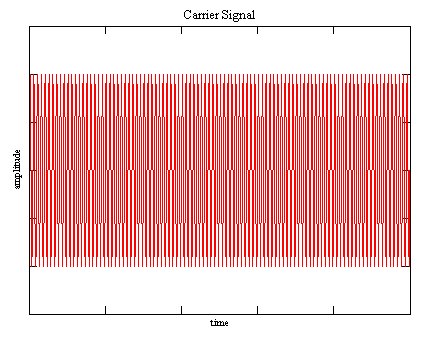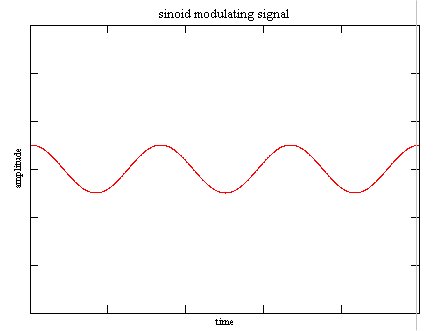Amplitude modulation: Difference between revisions
No edit summary |
m (+cat) |
||
| Line 76: | Line 76: | ||
* [[Wikipedia:History_of_radio|A nice introduction to the History of Radio on Wikipedia]] |
* [[Wikipedia:History_of_radio|A nice introduction to the History of Radio on Wikipedia]] |
||
[[Category:Technology]] |
|||
Revision as of 22:39, 2 April 2005
What is AM?
Modulation Scheme, have been widely used in Analog Radio.used by e.g. by analog radio.
An Amplitude Modulator modulates the Amplitude of an sinoid Carrier signal using the incoming signal.
The Carrier signal is sinusoid with a fixed Frequency, usually much higher than the highest frequency occuring in the spectrum of the modulating signal.
Mathematical Setting
Base for transmission is a sinusoid Carrier Signal with continous Carrier frequency <math>f_c</math>:
This is modulated by the incoming signal, here modelled by a simple sine with frequency <math>f_m</math>:
The actual signal coming out of the AM modulator is simply the product of both functions <math>\omega_c \cdot \omega_m</math>. Evaluating this in detail leads to the expression:
where <math>U_c</math> is the Modulation Amplitude and <math>m</math> the modulation index.
FIXME: is this formula correct, shouldn't theh transformation in frequency domain depend on frequency instead of time? As soon this is cleared we can transform the image entirely into TeX...
The first formula desribes what happens in time domain. It's basically multiplying of two cosine signals leading to the time domain picture in the example below.
The second formula describes the frequency response, the frequency spectrum consists of three spectrum lines at each time t. The first term is the carrier, for shure the carrier is in the spectrum, the second and third termes describe two spectrum lines around the carrier, and their amplitude is dependend on the modulation index m. As the modulating sognakll variies the lines around the carrier frequency are variing.
we should add an frequeny response picture below in the example FIXME: ENDOFFIXME
An Example
File:AM picture4.jpg Carrier Signal in frequency domain (to be added) | |
File:AM picture5.jpg Modulating Signal in frequency domain (to be added) | |
File:AM picture6.jpg AM Signal in frequency domain (to be added) |
Special Kinds of AM
- DSSC, Double Sideband Supressed Carrier
- SSB, Single Side Band
- Residual Sideband Modulation (modulation used for analog TV applications)
- QAM, Quadrature Amplitude Modulation
Aquired Bandwidth
An AM Signal shows up as single Peak in the Frequency Spectrum.
it would be nice to have a picture showing how AM signals in the frequency spectrum behave and how much bandwidth they allocate. A short overview of AM-related problems would be nice, too. Has anybody of you this info handy?
Noise Sensitivity
Echoes, multipath signaly, athmospheric and meteorologic phenomenons like lightings and electrostatic discharges contribute noise that simply gets added to the transmitted signal. Most other Modulation Schemes are less sensitive to noise.



